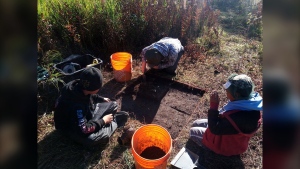An Alberta First Nation is advocating for greater autonomy over the management of historical resources on their lands.
The Siksika Nation, located east of Calgary, is seeking to gain more control over the preservation and protection of their cultural and historical artifacts. This includes artifacts such as tipi rings, stone tools, and other items that hold significant cultural and spiritual value to the community.
According to Chief Ouray Crowfoot, the Siksika Nation has been working towards this goal for many years. He explains that the current system, which is overseen by the provincial government, does not adequately consider the cultural significance of these resources to the First Nation.
Crowfoot also notes that the current process for obtaining permits to access and study these resources is lengthy and often results in delays or denials. This, he says, hinders the Siksika Nation’s ability to properly care for and preserve their heritage.
The Siksika Nation is proposing a new system that would give them more control over the management of historical resources on their lands. This would include the creation of a Siksika Nation Heritage Authority, which would work in collaboration with the provincial government to oversee the preservation and protection of these resources.
The proposed authority would also work to educate and involve the community in the management of these resources, ensuring that their cultural and spiritual significance is respected and preserved.
The Siksika Nation’s efforts have gained support from other First Nations in the province, as well as from the Alberta government. Minister of Culture, Multiculturalism and Status of Women, Leela Aheer, has expressed her commitment to working with the Siksika Nation to find a solution that respects their autonomy and cultural heritage.
The Siksika Nation’s push for greater control over historical resources on their lands is a significant step towards reconciliation and recognition of the importance of Indigenous culture and heritage. It is a reminder that the preservation and protection of these resources is not just a matter of history, but a crucial part of the present and future of Indigenous communities.




